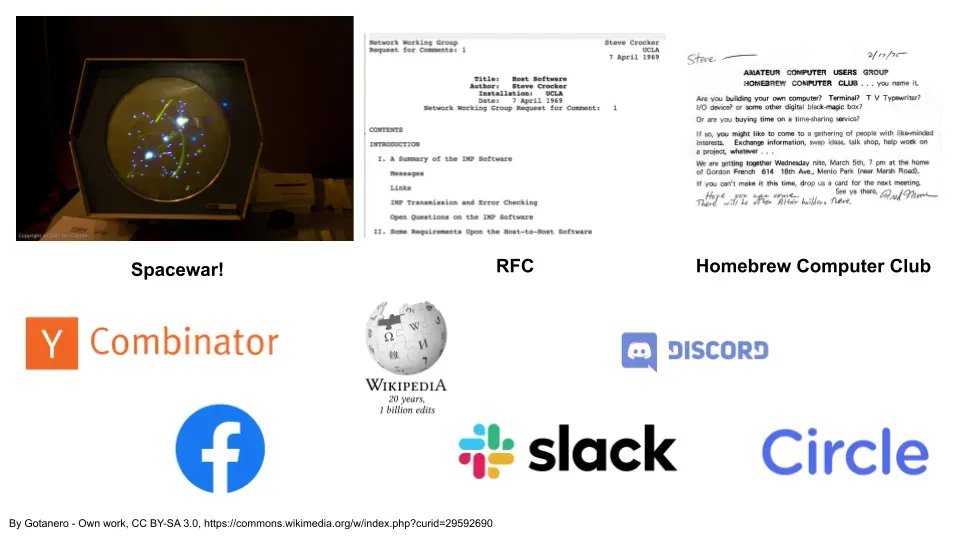Data analysis industry landscape
Market overview, risks, and competitive landscape

Investing in communities is a popular trend now; communities have always been at the center of how computing and the internet developed.
We’ve seen increased interest and investment in the community space recently, both in community platforms themselves and the software tools that support them.
Community as a concept isn’t new, whether that’s customers supporting a company or fans providing feedback in forums. The more engaged (fanatical?) your believers are, the lower your customer acquisition costs. Strong communities help you build a stronger business.
Let’s take a look at some historical examples of community, and then also some interesting ones around today.
MIT’s Tech Model Railroad Club was founded in 1946, directly influencing the spread of hacker culture. One of their notable creations was Spacewar! , the earliest video game played on multiple computers 1. Besides being an important game by its own right, Spacewar! would also go on to influence Nolan Bushnell to found Atari (creator of Pong).
The Network Working Group of the four initial ARPANET nodes 2 created the first Request for Comments (RFC) process in 1969 while deciding how to make the internet work. RFCs are now standard procedure for many companies and software developments.
The Homebrew Computer Club was started in 1975 as an informal group of people interested in electronics. They would go on to hear the first music played on a computer as well as popularise Microsoft’s software for the masses 3. Steve Wozniak and Steve Jobs were both members, crediting the club as inspiration for the Apple 4.
We’ve seen above how the early stages of computing were influenced by community. It’s also easy to find community driven growth for this millennium:
Y Combinator (2005) figured that providing both capital and community was a competitive advantage in early stage investing.
Ebay (1995) 5 showed that getting the user community to rate each other would provide a scalable way of ensuring quality in the service.
Wikipedia (2001) realised that community generated content was actually viable, after failing with expert generated content site Nupedia.
Facebook (2004) showed you could monetise a community indirectly with high margins on an ad-supported business model.
Software tools such as Slack (2009), Discord (2015), Circle (2019) grew popular because of communities adopting them to connect with each other.

And here are some interesting communities I see today (full disclosure, I’m part of some of them):
Finding community is not a new concept; most people are looking for others who “get” them. The development of computing and recent technologies have nearly always been a result of community collaboration, and it’s no surprise that people are continuing to invest in the space.
Spacewar! was made collaboratively and given out for free, which helped its popularity. I’m referencing The Innovators by Walter Isaacson for most of the examples here ↩
ARPANET is the precursor to the internet; the four nodes were UCLA, Stanford Research Institute, University of Utah, and University of California ↩
Technically they pirated Microsoft BASIC, small detail ↩
Well, Wozniak does at least; Jobs probably credits himself ↩
Yeah I know this is technically not the new millenium, let it slide ↩
Started out as supporters of the author, have evolved beyond that. Wasn’t sure how else to categorise ↩
Get my next essays in your inbox:
Comments